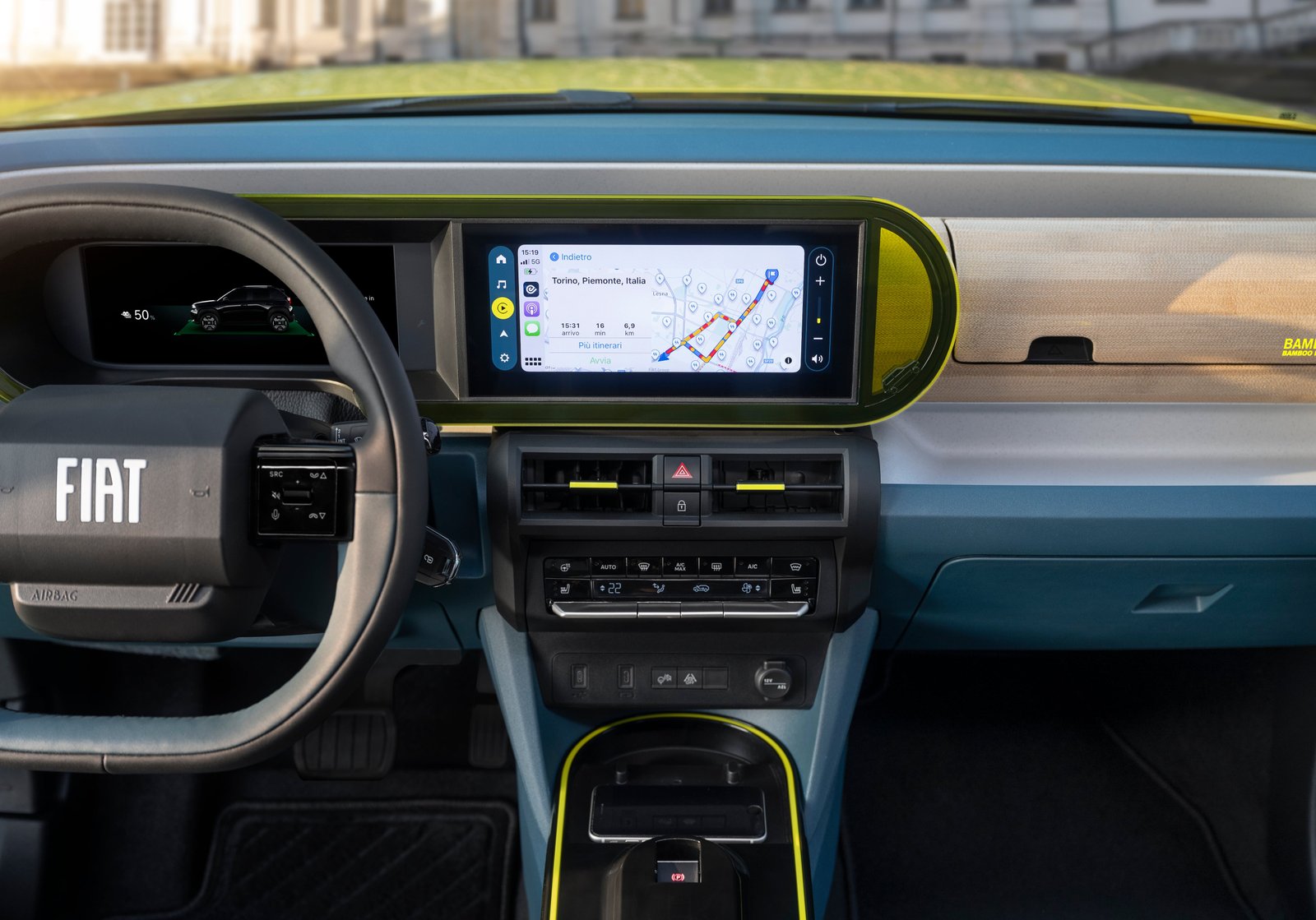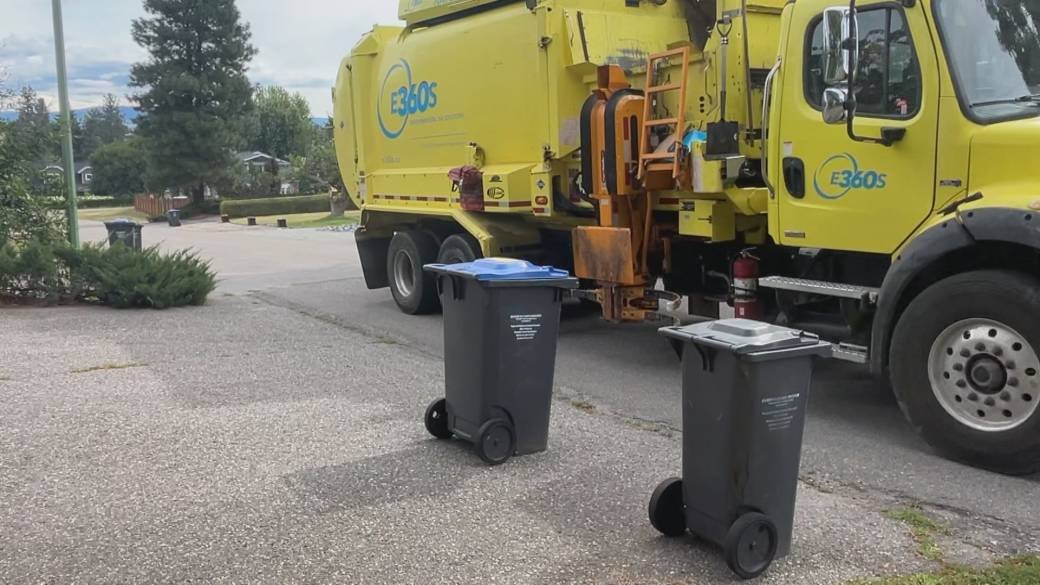Tools & Platforms
AI, paper bottles, lightweighting and more

Innovation has always been important in beverage packaging: creating robust containers that can protect fragile and sensitive liquids while standing up to the rigors of distribution and transportation.
Meanwhile, packs need to be shaped around consumer experience: with ergonomic shapes and a variety of shapes and sizes, all while providing a broad canvas for marketing and branding messages.
But now, innovation is underpinned by sustainability: how can beverage packaging reduce its impact on the environment while still delivering all these fundamental requirements?
Packaging innovation comes in all forms… here’s some of the latest developments pushing beverage packaging forward.
Artificial intelligence finds new packaging materials
Packaging has already been one of the big beneficiaries of automation and AI when it comes to production and packaging technologies.
The cost of automation has decreased, making the technology more accessible. Meanwhile, artificial intelligence is being built into robots and production lines, meaning technology can react in real time.
But what about outside production lines?
One of the biggest challenges for the beverage industry as it moves away from formats such as plastic bottles is to find new materials that can meet criteria when it comes to structural integrity and other considerations.
So Nestlé and IBM have announced this month that they’ve teamed up to develop new AI and deep tech tools for packaging innovations.
As part of the drive to reduce virgin plastic, companies are searching for alternative materials and novel techniques. However, identifying new materials – which meet the products functional needs as well as ensuring food safety and quality – is a process that can take years of research.
Instead, Nestlé and IBM scientists are leveraging AI-based processing techniques to construct a knowledge base of known materials. This can then be incorporated with a chemical language model to learn the representation of molecular structures.
The resulting model can be used to propose entirely new high-barrier packaging materials: which could ultimately find their way to top Nestle brands such as Nespresso, Nescafe, Kit Kat, Nesquik and more.
Glass lightweighting
Glass is a big source of emissions in the wine and spirits industry: and one of the biggest areas to address when it comes to making the sectors more sustainable.
So this week, Ardagh Glass Packaging Europe has launched a new 300g lightweight glass wine bottle.
The new launch combines ultra-lightweight design with high strength and premium shelf appeal.
Wine bottles typically weigh in the region of 500g.
With the wine industry facing increasing pressure to reduce its impact on the environment (with a significant portion coming from glass), the bottle is set up to deliver on three key fronts: material reduction, structural performance and brand presentation.
The 75cl bottle is suited to high-speed filling lines and can withstand supply chain handling, all while delivering a significant reduction in bottle weight.
The bottles are available in green, flint and other glass colors.
While Ardagh’s bottle is designed for still wine, Champagne Telmont has taken up the challenge in sparking wine.
This month sees the debut of its ultra-lightweight Champagne bottle: which comes in at 800g instead of 835g.
While this is still considerably more than a still wine bottle, it represents a big step in lightweighting in a category where the pressure created by a sparkling beverage presents a major technical challenge (in fact, the gas inside a Champagne bottle is around twice that of a pressure in a car tire).

Can paper-based caps top of paper bottle development?
Paper-based packaging is one of the fastest-moving and most exciting areas of beverage packaging development.
Cartons have been growing in popularity as an alternative to glass or plastic; while innovators are turning the dream of paper bottles into a reality.
Also read → Paper bottles: Do they have the potential to revolutionize the market?
Absolut vodka has been trialing a paper-based cap this year to accompany its paper bottle.
The cap, developed with Swedish start-up Blue Ocean CLosures (BOC), is made of more than 95% FSC certified fibers, although does maintain a thin top-seal barrier made of plastic in this generation.
The ambition is to replace the plastic with a bio-based material so the entire cap will be made with renewable materials.

Meanwhile, in cartons, SIG and PulPac have just launched a strategic partnership to replace plastic caps with paper ones.
SIG, the Swiss-headquartered carton packaging specialist, and PulPac, a dry molded fiber tech company, will establish an exclusive development program for the next-generation of paper-based closures for SIG’s aseptic cartons. They’ll also focus on scaling up the tech to allow for large-scale production of the format.
PulPac’s dry molded fiber tech is based on forming a dry web of fibers, instead of creating materials from a fiber slurry. This results in minimized water usage in the molding process alongside several additional benefits like lower CO2 emissions compared to plastic solutions.
The tech also offers design flexibility and is engineered for high-volume production. Because SIG uses post-application in its closures (only after products have been filled into packaging and cartons have been sealed), this post-application process lays the foundation for a ‘plug-and-play’ setup which means paper-based closures can be applied in the same way as plastic ones, without changing the production process.

Carton development
Tetra Pak has been exploring novel uses for components of recycled cartons.
Beverage cartons are made up of around 70% paperboard, which can be recycled into paper-based products such as tablecloths, napkins and toilet paper.
However, cartons still need ultra-thin layers of aluminum and polymers to protect the food or beverage inside with a waterproof layer: and Tetra Pak has been exploring and expanding commercial applications for this remaining polyAl.
One surprising new destination for polymers is cars.

Fiat has become the first car manufacturer to use recycled materials from beverage cartons in a vehicle: specifically in the central console, dashboard, interior front and rear door panels.
Furthermore, the materials was used for visible interior parts: showcasing the aesthetic potential of the material’s shimmering effect from aluminum.
With the compound named Lapolen Ecotek, produced by Lapo Compound, a Fiat Grande Panda contains recycled material from the polyethylene and aluminium used in 140 beverage cartons.
The car is already on the market in most European countries, and will be available outside Europe by the end of the year.
SIG, meanwhile, is expanding solutions that eliminate the aluminum layer completely.
It claims a world first with 1-liter aseptic carton packs without the aluminum layer, which are made of SIG Terra Alu-free + Full barrier packaging material.
Following the success of this packaging material innovation in single-serve format, SIG is now expanding the alu-free option into the juice category and a multi-serve format for the first time. ALDI debuts the innovation with grape juice under its own brand Rio d’oro in Germany, reducing the carbon footprint of conventional multi-serve cartons by 29%.

SIG Terra Alu-free + Full barrier offers the same full barrier protection as standard SIG aseptic carton material and the same shelf life of up to 12 months. The packaging material can run seamlessly on existing SIG filling lines, including high-speed capabilities of up to 24,000 packs per hour for small-size cartons and 15,000 packs per hour for multi-serve formats.
The SIG Terra Alu-free + Full barrier packaging material is made from more than 80% paper and replaces the aluminum layer with an ultra-thin polymer coating that protects products against oxygen, light, moisture, and aroma loss.
New packaging plant
Greatview, the world’s third largest aseptic packaging provider, has opened a new plant in Italy this month: which will supply the company’s 200ml Slim Brick Plus.
The format features an extra-robust polymer barrier to maximize resilience during distribution, and enhances product safety for sensitive products.
The new plant, known as “Greatview Italy” is located in Perugia, and has been developed with CG Europoligrafico SpA, a long-established Italian manufacturer of advanced packaging.
Beverage cans
Beverage cans have been growing in popularity as an alternative to plastics, particularly in booming beverage categories such as beer and RTD alcohol.
In Europe, Aluminum beverage can manufacturer, Canpack, is expanding its production plant in Bydgoszcz, Poland in response to demand.
The facility will increase Canpack’s current production capacity of cans in the region by more than one billion cans annually, with further growth potential in the future, as the company sees growing demand from European customers.
The PLN 440m ($120m) expansion, which includes upgrading existing production lines and adding new state-of-the-art machinery and equipment, adds more than 100 new jobs to the 470 already in place on site.
Meanwhile, Pittsburgh-headquartered PPG has just expanded its easy-open end coatings for aluminum beverage cans: formulated without the use of BPA and PFAS to comply with global regulations.
The series is designed to facilitate increased line speeds, higher productivity and less waste (PPG Innovel PRO PPG2489 coating has the potential to lower carbon emissions by 20% using lower film weights). The products are compatible with various manufacturing processes for coil coaters and canmakers and are suitable for both 2-piece and 3-piece beverage can systems. The coatings protect against a wide range of beverage products against flavor transfer, corrosion and challenging ingredient formulations: including beer, seltzers, soda, sparking water, juices, RTD cocktails, energy drinks, wine and others.
Tools & Platforms
The AI Revolution: Reshaping Wall Street’s Landscape – Winners, Losers, and the Road Ahead
The integration of artificial intelligence into the global economy is not merely a technological advancement; it is a seismic shift reverberating through the financial markets, fundamentally redefining investment strategies and corporate valuations. The fervent adoption and development of AI technologies have propelled a significant surge in market activity, particularly within the tech sector, making it a dominant force driving indices like the S&P 500 and Nasdaq 100 to new heights. This burgeoning revolution presents a complex tableau of opportunities and risks, creating clear beneficiaries and nascent challenges for companies navigating this new paradigm.
Investors are grappling with the implications of an AI-driven market, characterized by enhanced trading efficiencies, unprecedented data analysis capabilities, and, paradoxically, heightened volatility. The excitement surrounding AI’s potential for transformative growth is pushing valuations to historic levels, prompting both optimism and caution among market participants. As the AI “gold rush” accelerates, understanding the forces at play—the technological underpinnings, the key corporate actors, and the broader economic ramifications—becomes paramount for anyone invested in the future of the stock market.
The Algorithmic Ascent: How AI Seized Control of Market Momentum
The current landscape of the stock market is unmistakably shaped by the pervasive influence of artificial intelligence. What began as a promising technological innovation has rapidly evolved into a primary driver of market activity, instigating a substantial uptick in valuations and reorienting investment capital towards companies at the forefront of AI development and integration. The sheer scale of investment by tech giants into AI infrastructure is not only fueling economic growth but is also directly contributing to the GDP, signifying AI’s transition from a niche technology to a macroeconomic force.
This monumental shift has largely unfolded over the past few years, with a noticeable acceleration in 2023 and 2024 as AI moved from theoretical discussions to tangible product deployments and foundational infrastructure build-outs. The “AI Gold Rush” has seen unprecedented capital allocation, particularly in the tech sector, where companies developing and deploying AI-centric solutions—from advanced semiconductors to sophisticated software and data centers—are experiencing explosive growth. Key players like NVIDIA (NASDAQ: NVDA), Microsoft (NASDAQ: MSFT), Amazon (NASDAQ: AMZN), and Meta Platforms (NASDAQ: META) have witnessed their stock prices soar, becoming synonymous with the AI boom. NVIDIA, for instance, has cemented a near-monopoly in the critical AI Graphics Processing Unit (GPU) market, positioning itself as the indispensable “picks and shovels” provider for this modern-day gold rush.
Initial market reactions have been characterized by fervent enthusiasm, with AI-related companies now comprising a significant portion of major indices. The “Magnificent Seven” tech giants, many with substantial AI investments, have been the primary architects of the overall stock market’s upward trajectory. This enthusiasm, however, is tempered by a growing discourse around potential overvaluation and the sustainability of these rapid gains. Experts suggest a degree of “herd mentality” is at play, where investors, driven by the fear of missing out (FOMO), are piling into shares. Moreover, the dominance of AI-powered algorithmic trading, now accounting for an estimated 60-75% of total U.S. stock market trading volume, has profoundly impacted market efficiency and liquidity, enabling rapid, data-driven decisions and reducing the influence of human emotions, yet simultaneously raising concerns about increased market instability and faster, potentially exacerbated, price reactions during periods of stress.
The Shifting Sands: Identifying the AI Revolution’s Winners and Losers
The AI revolution is proving to be a powerful, disruptive force, creating a clear demarcation between companies poised for unprecedented growth and those grappling with the imperative to adapt or risk obsolescence. The “winners” are predominantly found in sectors that provide the foundational components for AI, develop AI-powered solutions, or can seamlessly integrate AI to enhance their existing operations and offerings. Conversely, “losers” may emerge from industries slow to adopt AI, those reliant on traditional labor models easily automated, or companies whose competitive edge is eroded by AI-driven efficiency and innovation from rivals.
Among the unequivocal winners are the semiconductor manufacturers, particularly those specializing in AI-specific hardware. NVIDIA Corporation (NASDAQ: NVDA) stands as the preeminent example, with its high-performance GPUs being indispensable for AI and machine learning workloads due to their parallel processing capabilities. NVIDIA also develops comprehensive AI platforms and software, expanding beyond just hardware. The exploding demand for its data center GPUs has driven significant growth. Similarly, ASML Holding N.V. (NASDAQ: ASML), a critical supplier of advanced photolithography systems for chip manufacturing, benefits from the increasing demand for more powerful and smaller AI chips. Taiwan Semiconductor Manufacturing Company (TSMC) (NYSE: TSM), as the world’s largest independent semiconductor foundry, directly gains from increased orders for high-performance AI chips from its clients.
Cloud computing and software giants are also major beneficiaries. Microsoft Corporation (NASDAQ: MSFT), through its Azure cloud platform and strategic partnership with OpenAI, integrates AI across its product suite (e.g., Microsoft 365 Copilot) and benefits from the massive computational demands of AI model training. Alphabet Inc. (NASDAQ: GOOGL) leverages AI for its core search engine, advertising business, and develops advanced AI models (e.g., Gemini), with Google Cloud offering extensive AI services. Amazon.com, Inc. (NASDAQ: AMZN) dominates cloud computing with Amazon Web Services (AWS), providing scalable infrastructure and machine learning services (e.g., Amazon SageMaker). IBM (International Business Machines Corporation) (NYSE: IBM) is reorienting its strategy to focus on enterprise AI solutions and hybrid cloud, while UiPath Inc. (NYSE: PATH) specializes in Robotic Process Automation (RPA), with AI enhancing its automation capabilities for complex tasks.
On the flip side, the landscape is becoming more challenging for certain segments, particularly traditional IT services and outsourcing companies with labor-intensive models. While actively investing in AI and advising clients, parts of Accenture plc (NYSE: ACN)‘s traditional IT and business process outsourcing services could face disintermediation or commoditization by AI-powered automation, necessitating rapid retraining and a shift to higher-value, AI-centric consulting. Similar challenges confront Cognizant Technology Solutions Corporation (NASDAQ: CTSH), Wipro Limited (NYSE: WIT), HCL Technologies Ltd. (NSE: HCLTECH), and DXC Technology Company (NYSE: DXC). These companies must pivot their offerings towards AI-driven solutions and automation, transforming their service delivery models and upskilling their vast workforces to maintain growth and profitability in an increasingly AI-dominated landscape. Failure to adapt swiftly and effectively to AI integration will likely lead to revenue erosion from traditional service lines and a loss of competitive edge.
Industry Tremors: Broader Implications and Historical Parallels
The AI revolution is more than just a stock market phenomenon; it’s a fundamental reordering of industries, with wider implications that extend beyond immediate corporate balance sheets. This event fits squarely into a broader trend of technological disruption, echoing past paradigm shifts like the dot-com boom of the late 1990s or the advent of personal computing. The rapid adoption of AI is creating ripple effects across entire ecosystems, impacting competitors, partners, and even the regulatory bodies tasked with overseeing these changes.
Within industries, the drive for AI integration is forcing strategic pivots. Companies are re-evaluating their R&D priorities, talent acquisition strategies, and capital expenditure plans to ensure they remain competitive. AI is accelerating digital transformation and redefining operational efficiencies through automation and data-driven decision-making, leading to a projected 15% rise in labor productivity in developed markets. This also fosters innovation in business models, enabling personalized services and the proliferation of platform economies. Sector-specific transformations are evident in healthcare (drug discovery, personalized medicine), finance (fraud detection, market prediction), manufacturing (predictive maintenance, robotics), and marketing (targeted campaigns, chatbots).
The widespread adoption and intense competition in AI are creating significant ripple effects throughout industrial ecosystems. A competitive divide is emerging, with AI potentially leading to “super firms” and increased market concentration as tech giants leverage immense resources. Smaller AI startups face intense competition, high computational costs, and challenges in acquiring top talent and quality data, often necessitating “co-opetition” agreements with big tech firms. The demand for specialized AI chips has skyrocketed, driving innovation in chip design and manufacturing optimization, impacting the entire supply chain from silicon mining to component sourcing. Companies like NVIDIA (NASDAQ: NVDA), TSMC (NYSE: TSM), Broadcom (NASDAQ: AVGO), AMD (NASDAQ: AMD), and Micron (NASDAQ: MU) are experiencing significant impacts from this increased demand for AI infrastructure.
Regulatory and policy implications are also rapidly emerging, with governments globally grappling with the ethical considerations, potential job displacement, and market concentration risks. A “pacing problem” exists, as traditional laws struggle to keep up with AI’s rapid advancements. Jurisdictions are increasingly adopting a risk-based approach, like the EU’s AI Act, and emphasizing ethical AI principles such as transparency, accountability, and fairness. Transparency in development and rigorous testing of generative AI are deemed critical, while effective enforcement will require governments to hire AI talent and foster international cooperation. Geopolitical tensions around AI are also rising, with an “AI arms race” seen as a critical component of national security and technological dominance, akin to nuclear technology in the 20th century. Historical parallels include the Industrial and Digital Revolutions, which also raised fears about job displacement and the need for educational system adaptation. However, the current AI boom is distinguished by its strong research background, open community, and the “pent-up demand” to derive value from years of “Big Data” investments, suggesting a more robust and enduring impact than past “AI winters.”
What Comes Next: Navigating AI’s Uncharted Waters
As the AI revolution continues to unfold, the path ahead for the stock market and the broader economy remains both exhilarating and fraught with uncertainty. In the short term, leading up to 2030, the stock market will likely see sustained enthusiasm driven by AI, particularly in the tech and semiconductor sectors. Global venture capital funding for AI companies has surged, with generative AI attracting substantial investment. Companies providing foundational hardware like NVIDIA (NASDAQ: NVDA) and large-cap tech giants such as Microsoft (NASDAQ: MSFT) and Alphabet (NASDAQ: GOOGL) are expected to remain immediate beneficiaries. Utilities, too, are seeing increased demand due to the significant electricity requirements of AI data centers, potentially attracting growth-biased investors. However, concerns about an “AI bubble” persist, with some valuations exceeding those of the 1999 dot-com era, necessitating a balance of risk and reward and diversification.
Longer term, beyond 2030, AI is anticipated to become a general-purpose technology, contributing trillions to the global economy and increasing global productivity by as much as 40%. Industries like banking, high tech, and life sciences are projected to experience the biggest impact as a percentage of their revenues. Businesses that build with AI at their foundation are likely to become the most valuable, fundamentally reshaping various sectors. This will necessitate profound strategic pivots, moving beyond traditional decision-making to leveraging AI for real-time, actionable insights, automation, and enhanced customer experiences. Companies must invest in AI governance and leadership, focus on integration and scalability, and prepare for workforce transformation through reskilling programs.
Emerging markets stand at a unique crossroads, with AI offering opportunities to leapfrog development stages in sectors like agriculture, tourism, and manufacturing, fostering economic growth and innovation. However, significant challenges remain, including infrastructure deficiencies, skill gaps, regulatory uncertainties, and cultural and language barriers. The uneven access to advanced AI technologies could also exacerbate geopolitical disparities. Potential scenarios range from significant economic benefits—with generative AI adding trillions annually and boosting labor productivity—to profound societal transformations involving job displacement and creation, an imperative for upskilling, and urgent ethical and regulatory challenges regarding data privacy and algorithmic bias. Geopolitical power shifts will continue as nations vie for AI supremacy. Risks include increased energy consumption, the unpredictability of highly capable open-source AI models, and the persistent “pacing problem” where regulation struggles to keep up with technological advancement.
Conclusion: A New Dawn for Investment, With Caveats
The AI revolution stands as the defining financial event of our current era, a powerful catalyst reshaping market dynamics, corporate strategies, and global economies. The key takeaway is clear: AI is not a fleeting trend but a fundamental, enduring shift that will continue to drive market activity and redefine value creation for decades to come. Its immediate impact has been a significant boost to the tech sector, particularly for companies providing foundational AI infrastructure and software, leading to a concentrated market rally and unprecedented valuations for key players. The market has seen a distinct bifurcation, favoring companies that are proactive in integrating AI and challenging those slow to adapt.
Moving forward, the market will likely demand greater scrutiny of AI investments. While the initial phase has been characterized by enthusiastic adoption and speculative growth, the next stage will focus on demonstrated profitability and scalable applications of AI. Investors should watch closely for companies that are not only integrating AI but are also showing clear, measurable returns on their AI spending. The ability to translate AI capabilities into enhanced efficiency, new revenue streams, and improved customer experiences will be the ultimate differentiator between sustainable success stories and overhyped ventures. The emergence of AI agents, capable of executing entire workflows, will further disrupt traditional white-collar work and create new investment opportunities in specialized software and services.
For investors, a cautious yet opportunistic approach is advised. Diversification remains crucial, as does a deep understanding of the specific risks associated with AI-related investments, including potential overvaluation and market volatility. While human intuition and oversight in investment decisions are more important than ever, leveraging AI-powered analytical tools can provide invaluable insights into market trends and risk mitigation. In the coming months, investors should diligently monitor tangible AI-driven revenue and profit growth, evolving regulatory shifts from bodies like the U.S. Securities and Economic Commission (SEC), and geopolitical developments. Focus should extend beyond core AI software companies to foundational layers such as semiconductor manufacturers, data center providers, and cloud platforms. Prioritizing companies with strong fundamentals, clear business models, and defensible competitive advantages that effectively monetize their AI investments will be essential for navigating this transformative period in financial history. The massive energy demand for AI infrastructure and cybersecurity will also be critical areas to watch.
Tools & Platforms
Student Assembly Establishes Committee to Provide Recommendations on Technology, AI Policies

The Student Assembly voted to establish a Technology Committee during Thursday’s meeting, setting the stage for undergraduate involvement in University technology policy.
Resolution 5: Establishing The Technology Committee, passed unanimously at the Assembly meeting. The new committee is designed to address and advise on changing technology policies in the face of generative AI and other emerging technologies.
The committee will “provide recommendations on policies, programs, and initiatives,” and will “serve as the primary student voice on issues including digital tools … and policies concerning merging technologies such as generative AI,” according to the resolution.
Hayden Watkins ’28, the Assembly vice president for finance, was one of the sponsors of the resolution, which was designed to improve channels of communication with administration regarding technology.
“The [Technology Committee] will be a fantastic avenue for us students to communicate with administration and advise the Student Assembly on student perspectives on AI, hate speech on social media, and other issues relating to technology,” Watkins wrote in a statement sent to The Sun.
According to the resolution, the University has “historically relied on ad hoc student surveys and feedback mechanisms” to learn student perspectives, “but no formal or consistent channel exists for student input on University-wide technology governance decisions.”
While formal policy decisions relating to technology and its usage are done by University administrators, Student Assembly Bylaws state that the Assembly may create committees to “review all policies and programs … that create policy directly affecting student life.”
Membership of the committee will be selected by the Assembly and the IT Governance Liaison will serve as its chair.
In an email sent to students on August 28 from the Office of the Vice Provost for Undergraduate Education, the University acknowledged that while new technologies like generative artificial intelligence tools are “changing the educational landscape” and offer “incredible opportunities for learning,” they can also present various risks if used improperly.
However, the email did not establish a uniform AI policy, leaving specific policies up to individual professors in alignment with the existing Code of Academic Integrity and the undergraduate Essential Guide to Academic Integrity.
“Faculty will likely set different parameters around the appropriate use of generative AI in their courses,” the email read. “It is your responsibility to pay close attention to their course-specific guidelines.”
This approach mirrors peer institutions, which have been hesitant to issue bans on the use of generative AI, though schools including Columbia and Princeton have prohibited the use of AI for academics without instructor approval.
Read More
Tools & Platforms
AI tech identifies Central Okanagan properties and hazardous material in their bins – Okanagan
New technology that uses artificial intelligence (AI) may have homeowners in the Central Okanagan thinking twice about what they put into their curbside garbage and recycling bins.
Chad Evans is a recycling truck driver and says hazardous materials are ending up in the truck far too often.
“Every day,” he said. “Probably one in 10 bins.”
It’s hoped those numbers can be reduced with a new system being used across the Regional District of Central Okanagan (RDCO).
Called ‘Prairie Robotics’, the system involves mounted cameras that capture images of material going into the recycling trucks.
“As the bin is being emptied into the truck, that is when the hundreds or thousands of pictures are being taken and that’s getting sent back to our system,” said Brody Hawkins, district manager for Environmental 360 Solutions (E360s), the company contracted for curbside pickup by the RDCO.
“What that system does with those pictures is it uses AI to monitor all the contamination.”
The technology is then able to track the contaminated material back to the home involved.

Get daily National news
Get the day’s top news, political, economic, and current affairs headlines, delivered to your inbox once a day.
“We use the GPS coordinates of the garbage bin to identify the address,” said Hawkins.
The RDCO then sends an information postcard to that address.
The postcard is meant to act as a warning but one that could be followed by fines if the problem persists.
“They have an image of what the truck is seeing, so they can see exactly what they put in there that doesn’t belong and some more information,” said Cynthia Coates, supervisor of solid waste services for RDCO.

Some of the hazardous material that is still ending up in curbside bins too often range from corrosive, flammable, or poisonous items to less obvious things like batteries and battery operated devices, such as e-cigarettes, power tools, and smoking alarms.
According to Coates, propane tanks are also being discarded in the bins.
“I’m seeing notification of fires at both our landfill and in our trucks and in our recycling facilities more than ever,” Coates said. “So I think it’s becoming more prevalent than ever.”
In July, a fire erupted in the hopper of a recycling truck in Kelowna.
The driver was forced to dump the load in a nearby parking lot.
A metal fuel filter improperly placed in a recycling bin was the suspected cause.
Right now, four of the seven E360s recycling trucks are equipped with the new AI technology.
The new system will be installed in the remaining three in the coming weeks.

© 2025 Global News, a division of Corus Entertainment Inc.
-

 Business2 weeks ago
Business2 weeks agoThe Guardian view on Trump and the Fed: independence is no substitute for accountability | Editorial
-
Tools & Platforms1 month ago
Building Trust in Military AI Starts with Opening the Black Box – War on the Rocks
-

 Ethics & Policy2 months ago
Ethics & Policy2 months agoSDAIA Supports Saudi Arabia’s Leadership in Shaping Global AI Ethics, Policy, and Research – وكالة الأنباء السعودية
-

 Events & Conferences4 months ago
Events & Conferences4 months agoJourney to 1000 models: Scaling Instagram’s recommendation system
-

 Jobs & Careers2 months ago
Jobs & Careers2 months agoMumbai-based Perplexity Alternative Has 60k+ Users Without Funding
-

 Podcasts & Talks2 months ago
Podcasts & Talks2 months agoHappy 4th of July! 🎆 Made with Veo 3 in Gemini
-

 Education2 months ago
Education2 months agoMacron says UK and France have duty to tackle illegal migration ‘with humanity, solidarity and firmness’ – UK politics live | Politics
-

 Education2 months ago
Education2 months agoVEX Robotics launches AI-powered classroom robotics system
-

 Funding & Business2 months ago
Funding & Business2 months agoKayak and Expedia race to build AI travel agents that turn social posts into itineraries
-

 Podcasts & Talks2 months ago
Podcasts & Talks2 months agoOpenAI 🤝 @teamganassi









